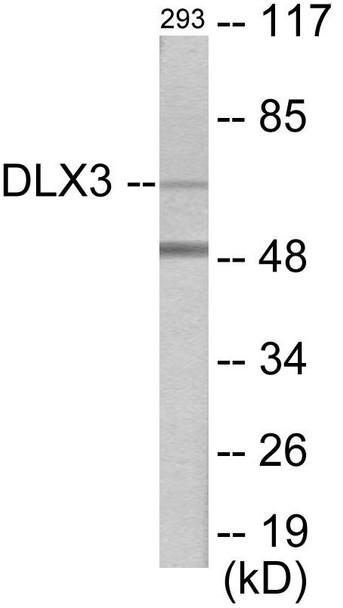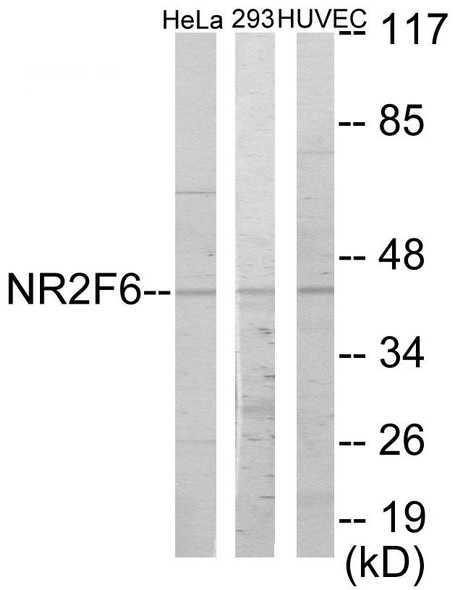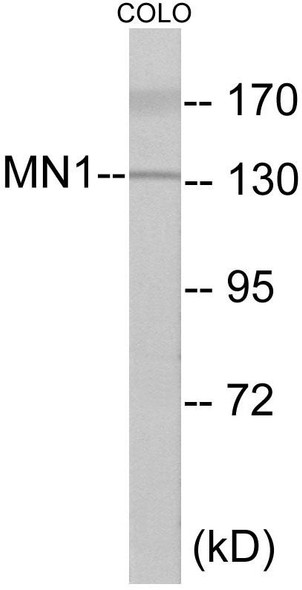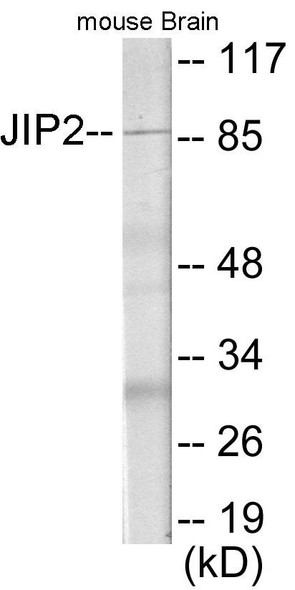Description
DLX3 Colorimetric Cell-Based ELISA
The DLX3 Colorimetric Cell-Based ELISA Kit is a cutting-edge assay for studying the role of DLX3 in cellular processes. DLX3 is a key transcription factor that plays a critical role in the development and differentiation of various cell types, making it an important target for research in areas such as tissue regeneration, developmental biology, and cancer.This kit offers a user-friendly and reliable method for quantifying DLX3 expression in cell lysates, providing valuable insights into its function and regulation.
With its high sensitivity and specificity, researchers can confidently analyze DLX3 levels in a variety of cell types and conditions, allowing for the precise measurement of this important transcription factor.Whether investigating the impact of DLX3 on cell differentiation, proliferation, or gene expression, the DLX3 Colorimetric Cell-Based ELISA Kit is a valuable tool for advancing scientific knowledge and uncovering new therapeutic targets. Order yours today and take your research to the next level.
| Product Name: | DLX3 Colorimetric Cell-Based ELISA |
| Product Code: | CBCAB00939 |
| ELISA Type: | Cell-Based |
| Target: | DLX3 |
| Reactivity: | Human, Mouse |
| Dynamic Range: | > 5000 Cells |
| Detection Method: | Colorimetric 450 nmStorage/Stability:4°C/6 Months |
| Format: | 96-Well Microplate |
The DLX3 Colorimetric Cell-Based ELISA Kit is a convenient, lysate-free, high throughput and sensitive assay kit that can detect DLX3 protein expression profile in cells. The kit can be used for measuring the relative amounts of DLX3 in cultured cells as well as screening for the effects that various treatments, inhibitors (ie siRNA or chemicals), or activators have on DLX3.
Qualitative determination of DLX3 concentration is achieved by an indirect ELISA format. In essence, DLX3 is captured by DLX3-specific primary antibodies while the HRP-conjugated secondary antibodies bind the Fc region of the primary antibody. Through this binding, the HRP enzyme conjugated to the secondary antibody can catalyze a colorimetric reaction upon substrate addition. Due to the qualitative nature of the Cell-Based ELISA, multiple normalization methods are needed:
| 1. | A monoclonal antibody specific for human GAPDH is included to serve as an internal positive control in normalizing the target absorbance values. |
| 2. | Following the colorimetric measurement of HRP activity via substrate addition, the Crystal Violet whole-cell staining method may be used to determine cell density. After staining, the results can be analysed by normalizing the absorbance values to cell amounts, by which the plating difference can be adjusted. |
| Database Information: | Gene ID: 1747, UniProt ID: O60479, OMIM: 600525, Unigene: Hs.134194 |
| Gene Symbol: | DLX3 |
| Sub Type: | None |
| UniProt Protein Function: | DLX3: Likely to play a regulatory role in the development of the ventral forebrain. May play a role in craniofacial patterning and morphogenesis. Defects in DLX3 are a cause of trichodentoosseous syndrome (TDO). TDO is an autosomal dominant syndrome characterized by enamel hypoplasia and hypocalcification with associated strikingly curly hair. Defects in DLX3 are the cause of amelogenesis imperfecta type 4 (AI4); also known as amelogenesis imperfecta hypomaturation-hypoplastic type with taurodontism. AI4 is an autosomal dominant defect of enamel formation associated with enlarged pulp chambers. Belongs to the distal-less homeobox family. |
| UniProt Protein Details: | Protein type:DNA-binding; Transcription factor Chromosomal Location of Human Ortholog: 17q21.33 Molecular Function:transcription factor activity Disease: Amelogenesis Imperfecta, Type Iv; Trichodentoosseous Syndrome |
| NCBI Summary: | Many vertebrate homeo box-containing genes have been identified on the basis of their sequence similarity with Drosophila developmental genes. Members of the Dlx gene family contain a homeobox that is related to that of Distal-less (Dll), a gene expressed in the head and limbs of the developing fruit fly. The Distal-less (Dlx) family of genes comprises at least 6 different members, DLX1-DLX6. Trichodentoosseous syndrome (TDO), an autosomal dominant condition, has been correlated with DLX3 gene mutation. This gene is located in a tail-to-tail configuration with another member of the gene family on the long arm of chromosome 17. Mutations in this gene have been associated with the autosomal dominant conditions trichodentoosseous syndrome and amelogenesis imperfecta with taurodontism. [provided by RefSeq, Jul 2008] |
| UniProt Code: | O60479 |
| NCBI GenInfo Identifier: | 3913487 |
| NCBI Gene ID: | 1747 |
| NCBI Accession: | O60479.1 |
| UniProt Secondary Accession: | O60479,B3KQL6, |
| UniProt Related Accession: | O60479 |
| Molecular Weight: | 31,738 Da |
| NCBI Full Name: | Homeobox protein DLX-3 |
| NCBI Synonym Full Names: | distal-less homeobox 3 |
| NCBI Official Symbol: | DLX3 |
| NCBI Official Synonym Symbols: | AI4; TDO |
| NCBI Protein Information: | homeobox protein DLX-3 |
| UniProt Protein Name: | Homeobox protein DLX-3 |
| Protein Family: | Distal-less-like protein |
| UniProt Gene Name: | DLX3 |
| Component | Quantity |
| 96-Well Cell Culture Clear-Bottom Microplate | 2 plates |
| 10X TBS | 24 mL |
| Quenching Buffer | 24 mL |
| Blocking Buffer | 50 mL |
| 15X Wash Buffer | 50 mL |
| Primary Antibody Diluent | 12 mL |
| 100x Anti-Phospho Target Antibody | 60 µL |
| 100x Anti-Target Antibody | 60 µL |
| Anti-GAPDH Antibody | 60 µL |
| HRP-Conjugated Anti-Rabbit IgG Antibody | 12 mL |
| HRP-Conjugated Anti-Mouse IgG Antibody | 12 mL |
| SDS Solution | 12 mL |
| Stop Solution | 24 mL |
| Ready-to-Use Substrate | 12 mL |
| Crystal Violet Solution | 12 mL |
| Adhesive Plate Seals | 2 seals |
The following materials and/or equipment are NOT provided in this kit but are necessary to successfully conduct the experiment:
- Microplate reader able to measure absorbance at 450 nm and/or 595 nm for Crystal Violet Cell Staining (Optional)
- Micropipettes with capability of measuring volumes ranging from 1 µL to 1 ml
- 37% formaldehyde (Sigma Cat# F-8775) or formaldehyde from other sources
- Squirt bottle, manifold dispenser, multichannel pipette reservoir or automated microplate washer
- Graph paper or computer software capable of generating or displaying logarithmic functions
- Absorbent papers or vacuum aspirator
- Test tubes or microfuge tubes capable of storing ≥1 ml
- Poly-L-Lysine (Sigma Cat# P4832 for suspension cells)
- Orbital shaker (optional)
- Deionized or sterile water
*Note: Protocols are specific to each batch/lot. For the correct instructions please follow the protocol included in your kit.
| Step | Procedure |
| 1. | Seed 200 µL of 20,000 adherent cells in culture medium in each well of a 96-well plate. The plates included in the kit are sterile and treated for cell culture. For suspension cells and loosely attached cells, coat the plates with 100 µL of 10 µg/ml Poly-L-Lysine (not included) to each well of a 96-well plate for 30 minutes at 37°C prior to adding cells. |
| 2. | Incubate the cells for overnight at 37°C, 5% CO2. |
| 3. | Treat the cells as desired. |
| 4. | Remove the cell culture medium and rinse with 200 µL of 1x TBS, twice. |
| 5. | Fix the cells by incubating with 100 µL of Fixing Solution for 20 minutes at room temperature. The 4% formaldehyde is used for adherent cells and 8% formaldehyde is used for suspension cells and loosely attached cells. |
| 6. | Remove the Fixing Solution and wash the plate 3 times with 200 µL 1x Wash Buffer for five minutes each time with gentle shaking on the orbital shaker. The plate can be stored at 4°C for a week. |
| 7. | Add 100 µL of Quenching Buffer and incubate for 20 minutes at room temperature. |
| 8. | Wash the plate 3 times with 1x Wash Buffer for 5 minutes each time. |
| 9. | Add 200 µL of Blocking Buffer and incubate for 1 hour at room temperature. |
| 10. | Wash 3 times with 200 µL of 1x Wash Buffer for 5 minutes each time. |
| 11. | Add 50 µL of 1x primary antibodies (Anti-DLX3 Antibody and/or Anti-GAPDH Antibody) to the corresponding wells, cover with Parafilm and incubate for 16 hours (overnight) at 4°C. If the target expression is known to be high, incubate for 2 hours at room temperature. |
| 12. | Wash 3 times with 200 µL of 1x Wash Buffer for 5 minutes each time. |
| 13. | Add 50 µL of 1x secondary antibodies (HRP-Conjugated AntiRabbit IgG Antibody or HRP-Conjugated Anti-Mouse IgG Antibody) to corresponding wells and incubate for 1.5 hours at room temperature. |
| 14. | Wash 3 times with 200 µL of 1x Wash Buffer for 5 minutes each time. |
| 15. | Add 50 µL of Ready-to-Use Substrate to each well and incubate for 30 minutes at room temperature in the dark. |
| 16. | Add 50 µL of Stop Solution to each well and read OD at 450 nm immediately using the microplate reader. |
(Additional Crystal Violet staining may be performed if desired – details of this may be found in the kit technical manual.)






